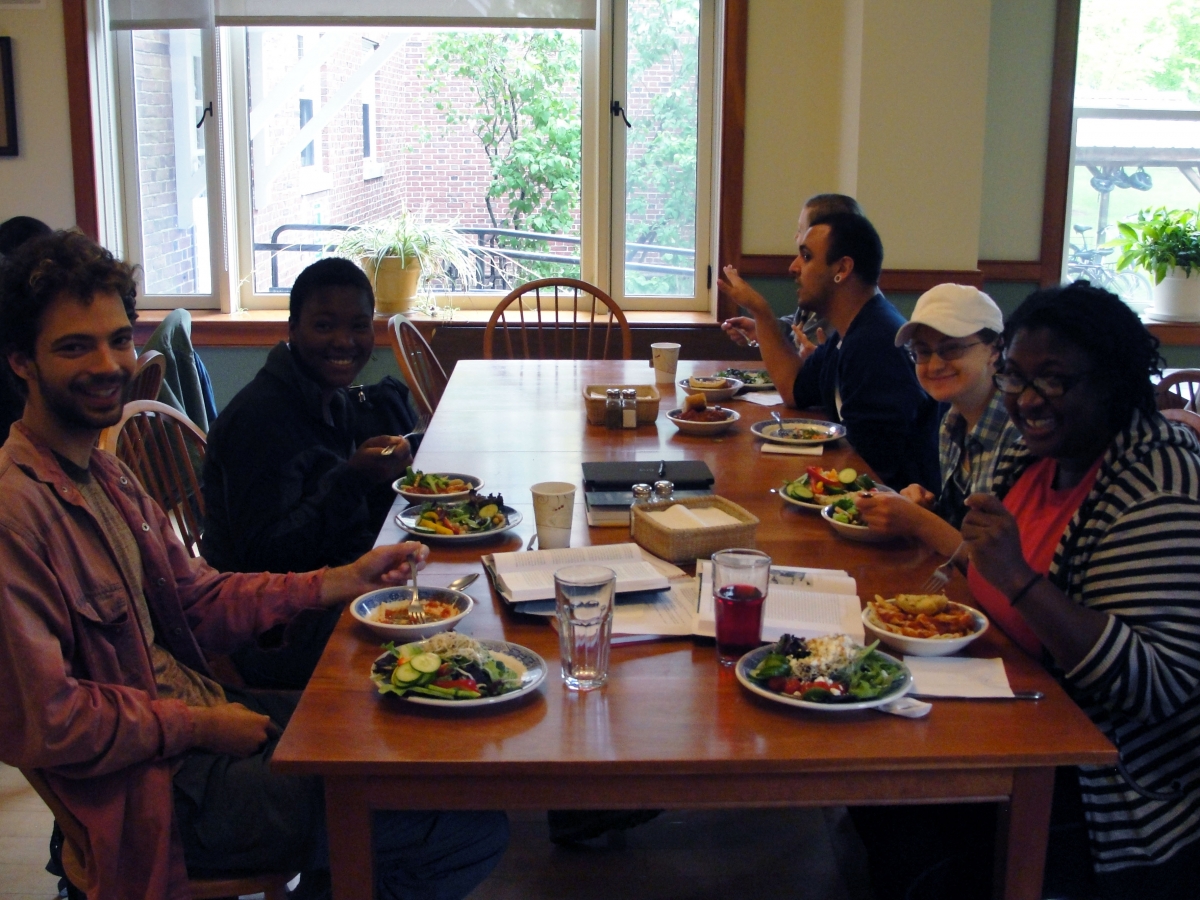You are here
The 2014 Summer Program in Ecology has begun!
The Harvard Forest was livened this week as 22 undergraduate students began the 11-week Summer Program in Ecology. These students will contribute skills, knowledge and hard work as they collaborate with scientists and professionals on projects ranging from improving the tools researchers use to document the steps in their statistical analyses to examining how climate change may indirectly affect carbon cycling by influencing the behavior of invertebrate predators. Through this experience, the students will build new friendships and knowledge and have the opportunity to refine, or redefine, their ambitions and interests.
The students arrived at the Harvard Forest on Monday, one traveling from as far away as Brazil, and settled into their rooms in Fisher House. Over the next couple of days they were introduced to their mentors and Harvard Forest staff and oriented to their new surroundings and roles as research assistants. On Tuesday, Harvard Forest researchers - Brian Hall, Audrey Barker-Plotkin, and Emery Boose - led the students on walking tours of the Prospect Hill tract.
In the Black Gum Swamp, they stopped to appreciate an example of how landscape characteristics and human preferences can alter forest stand demographics for hundreds of years into the future. A particular black gum tree had been protected from timber harvest there due to its location in the swamp and because its hard wood made it difficult to cut down and use for building or fuel. As a result, it has grown for over 400 years, making it among the oldest trees on the Harvard Forest property.
In the hemlock forest, it was tree mortality, rather than longevity, that was on display as students dusted fallen hemlock needles from their shoulders and hair. Some of the students will be studying the effects of the loss of this species, which is under attack by the Hemlock Woolly Adelgid, an aphid-like insect whose small, white, woolly masses can be seen at the base of hemlock needles throughout the forest.
Back at the Fisher Museum and Shaler Hall, students received training, met with mentors and shared stories over incredible meals prepared by Tim Zima and his assistant Sky-Maelene Santiago.

By Thursday night, the students had already begun their research and had their first seminar of the summer with Clarisse Hart. Clarisse shared insight from her experience communicating science to the public, and a few of the very brave stood up to summarize their summer research for the group.
![[Laura Figueroa summarized the basis of her summer research for us in a 1-minute, "elevator" speech.]](/sites/default/files/reu/Laura_Talking_cropped.jpg)
It was a busy week, and the weekend is a welcome break, but will not be without activity. The students have plans to explore the towns around the Harvard Forest, go hiking, and scout out good lakes and ponds for swimming once the summer heat sets in.

